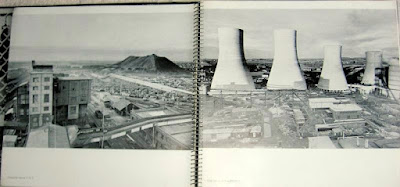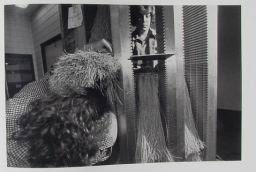Gerry Badger
Gerry Badger is a photographer, architect, and photographic critic. He has written extensively for the photographic press, and has curated a number of exhibitions, including 'The Photographer as Printmaker' (1980) for the Arts Council of Great Britain, and 'Through the Looking Glass: Post-war British Photography' (1989) for the Barbican Arts Centre, London.
His own work is in a number of public and private collections, including The Museum of Modern Art, New York, The Victoria and Albert Museum, The Arts Council Collection, and The Bibliothèque Nationale, Paris.
He has written introductory essays to many photographic monographs, including those of such photographers as Stephen Shore, John Gossage, Martin Parr and Chris Killip. Among his books are 'Collecting Photography' (2002), 'The Genius of Photography' (2007), and (with Martin Parr), 'The Photobook: A History' (2 vols., 2004 and 2006), winner of the Kraszna Krausz Prize in 2007.
Documentary photographer. Studied at the Rietveld Academy in Amsterdam. In his photographs he tries to interpret current developments against their historical background.
He made a series on the lives of Dutch immigrants in Brazil, photographed remnants of the Cold War infrastructure, made a book on the iron foundries along the river Oude IJssel, and captured the decay and the renovation of the Olympic Stadium in Amsterdam. He has published photo books
Mensenstroom - herinnering aan de Kernenergiecentrale Dodewaard, The Unilever Factories at Delft, Loosdrecht, and Vlaardingen (Unilever)...
Open publication - Free
publishing -
More photography
Reader Fotografie & Industrie
Samenstelling: Bart Sorgedrager en Flip Bool
‘Je hebt maar één lezer, en dat is je volgende opdrachtgever (…) Voor de opdrachtgever is het een groot spel van ijdelheden, zo’n gedenkboek. Hij wil een schitterend boek. Want het is zíjn boek. Hij is het boek. Zijn ijdelheid is boek geworden. Hij ligt daarin vast voor de eeuwen …’
Max Dendermonde, 1988
Inhoud:
Bart Sorgedrager
De schoorsteen moe(s)t roken
Tekst geschreven in opdracht van het lectoraat fotografie
van akv | St. Joost, Avans Hogeschool.
Breda 2010
Urs Stahel
Industrial photography: the theater of objectivity
pagina 15-19 uit:
Well, what is photography?
A lecture on photography on the occasion of
the 10th anniversary of Fotomuseum Winterthur
Winterthur / Zürich Berlijn New York:
Fotomuseum Winterthur / Scalo 2003
Michael Collins
Record pictures: photography and realism
ongepagineerd uit:
Record pictures. Photographs from the archives
of the Institution of Civil Engineers
Göttingen: SteidlMACK 2004
Anneke van Veen
‘met de erkende photographische getrouwheid.’
het werk van pieter oosterhuis (1816-1885)
pagina 33-35, 38-40 en 42-43 uit:
c Oosterhuis [1816-1885]
Amsterdam: Fragment Uitgeverij 1993
Steven W. Plattner
The standard oil photography
project 1943-1950
pagina 11-25 uit:
Roy Stryker: U.S.A., 1943-1950. The Standard Oil (New Jersey) photography project
Austin: University of Texas Press 1983
Hans Scheurer
Expedities in niemandsland: fotografen zien het ruhrgebied. chronologie aan de hand van
een keuze van voorbeelden
pagina 96-98 vertaald uit:
Endlich so wie überall? Bilder und Texte aus dem Ruhrgebiet
Band 3 aus der Schriftenreihe der Kulturstiftung Ruhr 1987
Flip Bool
Vrijheid in gebondenheid
pagina 9-14 uit:
50 jaar fotografie. GKf 1945-1995
Amsterdam: De Verbeelding 1995
Bint photoBooks on INTernet | Promote Your Page Too



























































